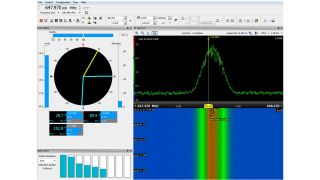Technical background
Conventional DF methods are based on the assumption that the frequency channel of interest has only one dominating wave. However, this may not be the case due to factors such as the following:
- Spectral overlapping (e.g. CDMA) occurs among thewanted signals being evaluated
- High-amplitude interferers occur in addition to the wanted signal (e.g. electromagnetic interference)
- Multipath propagation is present (e.g. reflections from buildings). The DF errors that arise will make the results unusable
Conventional DF technology offers two countermeasures:
- lf the interferer component is lower in power than the wanted signal component, the DF error can be minimized by dimensioning the direction finder accordingly (by selecting an antenna aperture that is large enough)
- lf the interferer component is equal to or greater than the wanted signal component, you can take separate bearings of noncorrelated signals using high-resolution wideband direction finders. You can benefit from the spectral differences of the signals
Super-resolution DF methods offer a systematic solution to this problem: They make it possible to calculate the number of waves involved and their angle of incidence. This can be done in different ways. The most accurate method is based on principal component analysis (PCA) of the antenna data. The new R&S®DDF5GTS and the R&S®DDFGTX-SR super-resolution option make use of PCA.







